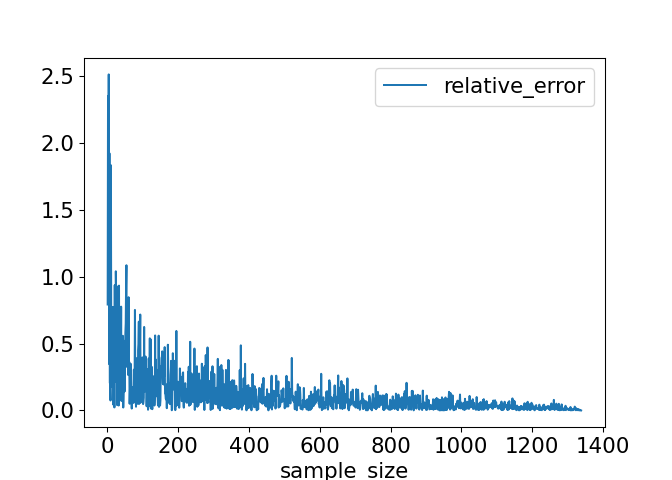Relative error of point estimates
Sampling in Python

James Chapman
Curriculum Manager, DataCamp
Sample size is number of rows
len(coffee_ratings.sample(n=300))
300
len(coffee_ratings.sample(frac=0.25))
334
Various sample sizes
coffee_ratings['total_cup_points'].mean()
82.15120328849028
coffee_ratings.sample(n=10)['total_cup_points'].mean()
83.027
coffee_ratings.sample(n=100)['total_cup_points'].mean()
82.4897
coffee_ratings.sample(n=1000)['total_cup_points'].mean()
82.1186
Relative errors
Population parameter:
population_mean = coffee_ratings['total_cup_points'].mean()
Point estimate:
sample_mean = coffee_ratings.sample(n=sample_size)['total_cup_points'].mean()
Relative error as a percentage:
rel_error_pct = 100 * abs(population_mean-sample_mean) / population_mean
Relative error vs. sample size
import matplotlib.pyplot as plt
errors.plot(x="sample_size",
y="relative_error",
kind="line")
plt.show()
Properties:
- Really noise, particularly for small samples
- Amplitude is initially steep, then flattens
- Relative error decreases to zero (when the sample size = population)

Let's practice!
Sampling in Python

